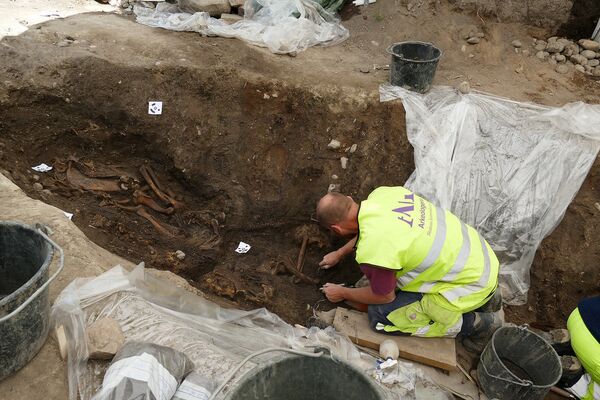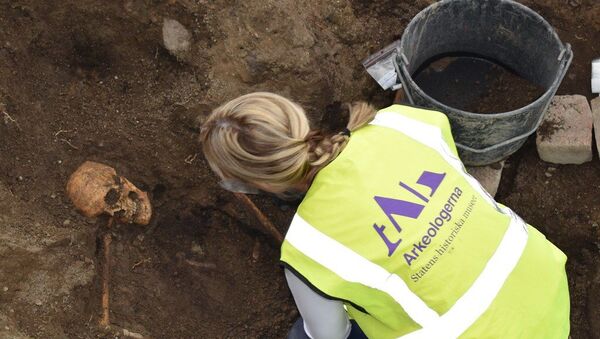Two unburned Viking-era burial ships have been uncovered near the village of Gamla Uppsala, which is one of Sweden's most important ancient Viking and Pagan sites.
“This is a unique excavation, the last burial ship was examined 50 years ago”, a triumphant Anton Seiler, an archaeologist at the National Historical Museums (SHMM), told national broadcaster SVT, describing the find as a “sensation”.
The reason for his joy is that intact ship burials are few and far between. Only around ten discoveries of this kind have been made to date in the Scandinavian nation, according to researchers. The last discovery was made in the 1973, close to half a century ago.

Ship burials, where people were put to rest in full-sized vessels, were only available for high-ranking members of the warrior aristocracy, not commoners.
“Only a singular people were buried in this way”, Seiler explained. “You can suspect they were the most distinguished members of the contemporary society since burial ships in general are very rare”.
The man in one of the graves was put to rest with a plethora of objects, such as weapons, shields and a comb. However, the remains of animals, including a horse and a dog, were also found. The animals, obviously belonging to the man, were placed at the fore of the boat, whereas the owner was rested at the stern.
The seemingly undamaged body, however, turned out to have a large hole in the head. The archaeologists' shock was mixed with enthusiasm.
Ni som med spänning följt nyheterna om de nya båtgravarna i Gamla Uppsala har så klart inte missat SVT:s fina reportage från utgrävningen. https://t.co/mkXKpXE8kl
— Gamla Uppsala museum (@Gamla_Uppsala) 10 июля 2019 г.
“He was killed”, osteologist Caroline Arcini suggested. “I am convinced that the wound was caused by a sword. What amazes me, however, is that we cannot find the missing skull piece”.

One hypothesis is that the man miraculously survived the gruesome wound. However, according to Arcini, death was most likely the outcome.
At present, the archaeological team is in full swing analysing and interpreting the findings in order to shed more light. “To be continued”, Arcini promised.
Although the exact age of the graves remain unclear, most burial ships of this type originate from either the Viking Age (793–1066 AD) or the era immediately preceding it, known as the Vendel Period (500-793 AD).
Earlier this year, another major discovery associated with early Nordic burial practice, was made in Scandinavia, when archaeologists from the Norwegian Institute for Cultural Heritage Research (NIKU) located a huge Viking ship using an advanced new ground-penetrating radar technique in Østfold County, southeastern Norway.
As early as the 4th century and onwards, Gamla Uppsala was the key religious, economic, and political centre of the Norse world. The earliest Scandinavian written sources name it as the residence of the fabled Yngling dynasty. For centuries, it served as the location for the Thing of all Swedes (roughly a Norse general assembly). When Sweden became a Christian nation, Gamla Uppsala became Sweden's archbishopric.
#GamlaUppsala, the Ancient Uppsala, just few kilometers north from Uppsala center. Here are ancient kings' burial mounds, the Viking era leftovers and great wall paintings in mediveal stone church #GamlaUppsalaKyrka. #HistoricalSweden pic.twitter.com/i9bMrudkTS
— Wenbing Wang (@WenbingWang) 3 июля 2019 г.


